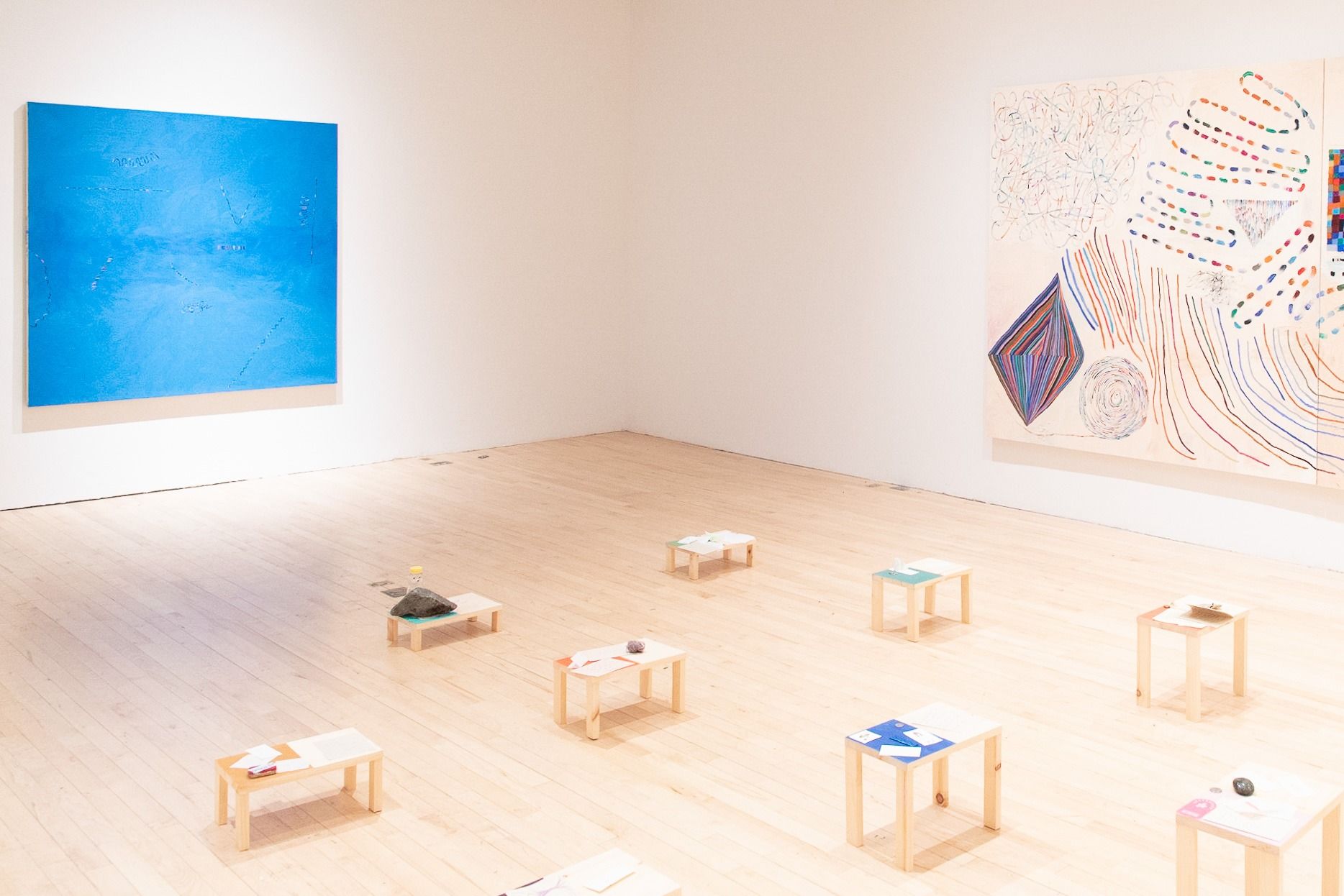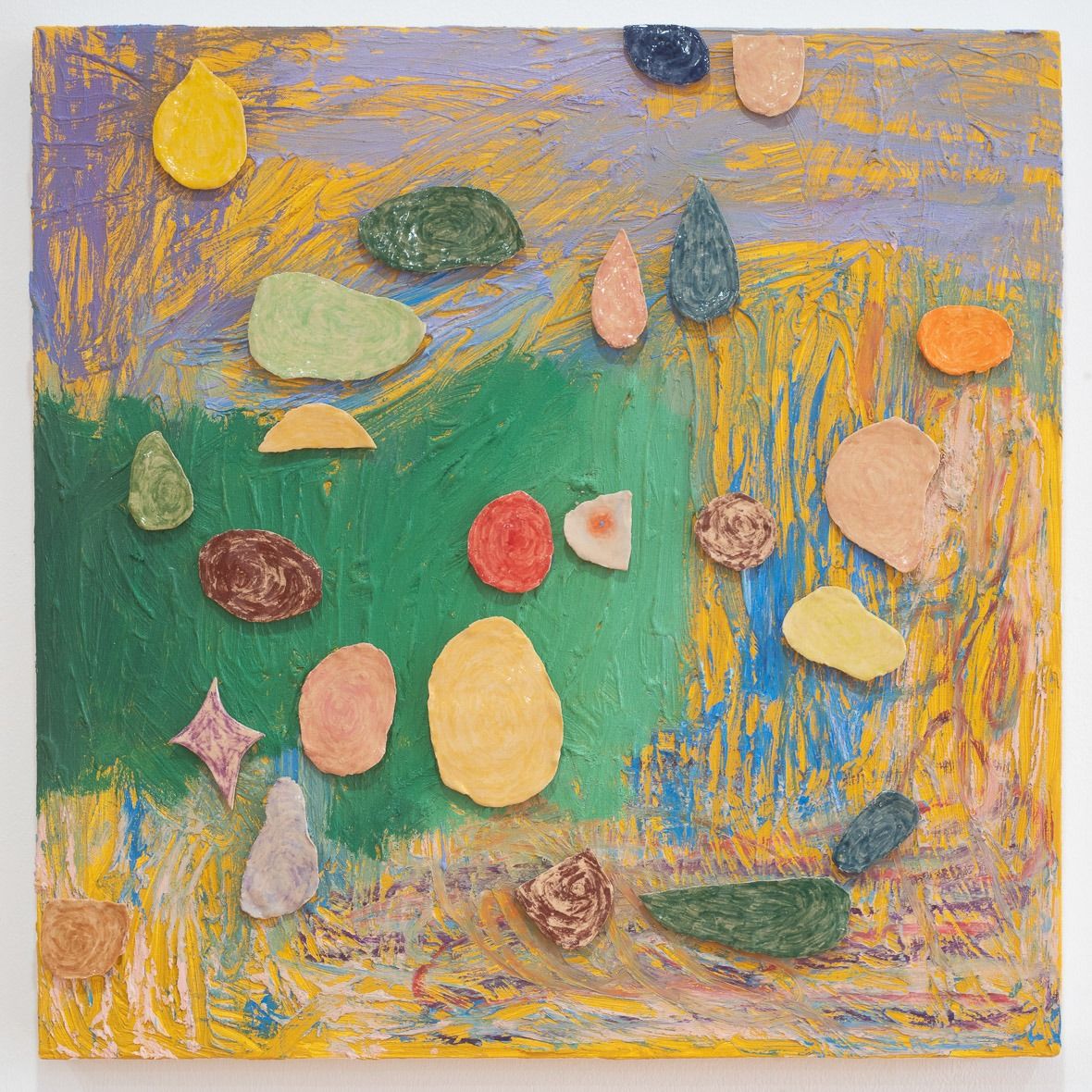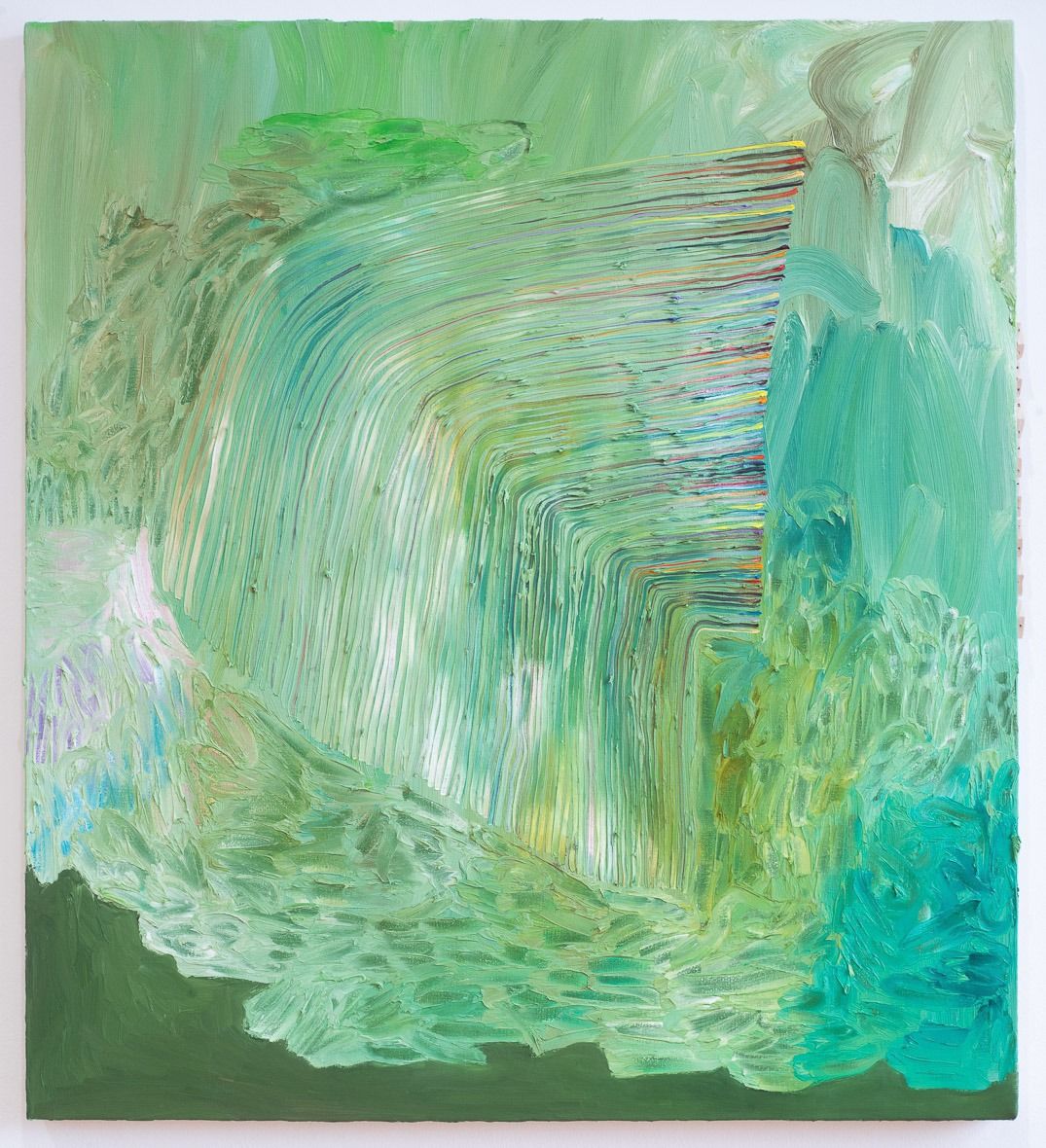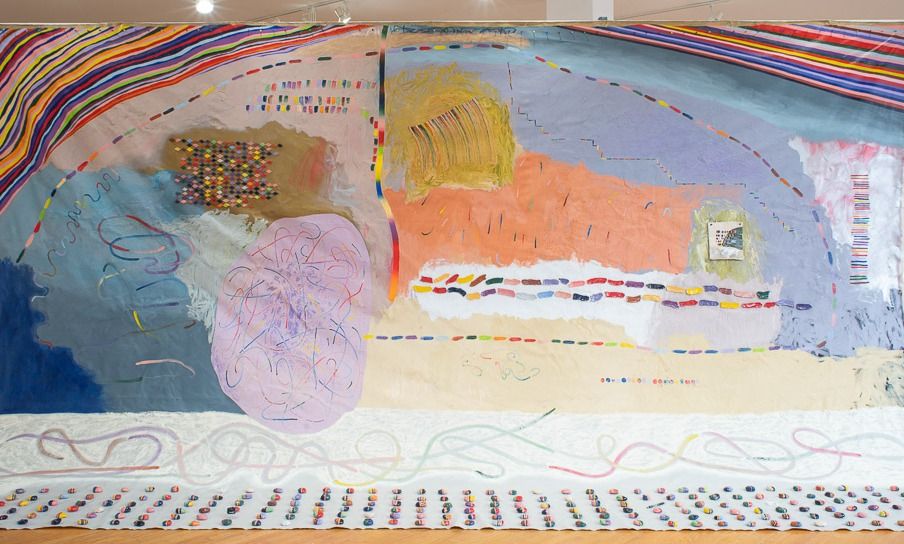Conversation with Erika Germain
Interview with the recipient of the April edition of MyMA Artist Grant, Erika Germain.

Hi, Erika, thank you for joining us today. Can you tell us a little bit about yourself and your work?
I'm an emerging artist based in Edmonton, Canada. I finished my MFA about a year ago at Cornell University in Ithaca, New York. I’ve been around New York state for a couple of years but I'm from Edmonton and moved back here this past winter. Right now, I'm continuing to pursue my artistic practice and getting involved in the local arts community in my home city. My art practice is focused around themes of language, translation, poetics, religion, ritual and exchange, looking at how all those themes overlap. I approach these themes through the lens of painting, print media, ceramics, and social practice-based participatory projects.

That's amazing. As you just mentioned, your work really traverses mediums, working in painting, installation, ceramics and performance. Can you tell us a bit about what it's like working across disciplines?
Yeah, I think it's really exciting. Something I think about a lot is these two strains of work. There's the physical, material works, which, a lot of the time, look like paintings, or sculptures, traditional media. And then there's these participatory exchanges, where I am thinking about how to disseminate multiples of small artworks. Sometimes those are prints, artist’s books, or small ceramic pieces. I think about how the participatory projects connect to the physical individual pieces, or the bodies of work through this idea of creating a new world for those events to take place in. The actual physical works are the context, and then the rituals of exchange are the events, together becoming an encompassing world to fully explore.

That's awesome! Language and translation heavily informs your work. How does the written and spoken word inspire your visual language?
The process that I've been exploring for the past five years or so has been to create a system where I am assigning a color to each letter of the alphabet, and then I translate textual sources into painted or sculptural works. Those sources can range from my own personal writings, my own poetry or stories, as well as literary texts, poetry, or theory. I also will incorporate the writings that I collect from viewers in the participatory exchanges. I recently had a project where I had viewers write down and give me the name of someone they love in exchange for a small painting. I'm now making a body of work around the translations of these names of loved ones. That process of translation, to me, connects to this idea of exchange, ritual,and religion. The history of translation is extremely interwoven with religion and these ideas around how to communicate, and how to build and structure communities. Similarly in my work the visual realm becomes the language that I'm translating these experiences into in order to build and structure communities with my viewers and various other publics.
You're really building your own language. What does a normal day in the studio look like for you?
Right now it's pretty chaotic because I am working a lot. But lately, I've just been going through this list of names of loved ones that I have collected, and I am making a lot of sketches and studies in response to these names, thinking of how to give each name a painting. I've also gotten really into these marbley backgrounds this past year and have been using them as a visual through line to connect these new works. So each painting begins with building a visual context for the name that is then “written” into it using my system of translation, usually in gradient lines or gestures based on my systems. It's a blend of a very intuitive process with a very systematized and planned process. In between that back and forth is usually where I'm sitting.

It's kind of like a world building or way of organizing through your own unique lens and language.
Yeah, absolutely.
Is there anything outside of art that informs your practice?
Yeah, I mean, a lot of reading literature and poetry
What are you reading?
Oh, I just finished reading The Mill on the Floss. I also started reading The Letters of Van Gogh and the Obelisk Gate, which is a sci-fi fantasy book by NK Jemisin. I usually have at least one fiction and nonfiction book going at once. Lately, I've been doing a book club with my sister and my cousin. So, always, a lot of literary sources. So much of my interest in language comes from a love of the world of literature.

What artists are you looking at right now?
People that have been on my mind lately are like Hilma AF Klint, John Schneider, Jonathan Lasker. There's someone on Instagram that I've been really into lately. Like not not just on Instagram, she exists in the real world.
Love how that happens.
Yeah, I think it was Leslie Roberts. She does these graphs and that are very systematized as well. Those are some artists I've been thinking about recently,
What do you listen to these days in the studio? Do you listen to podcasts or music?
I listen to a lot of true crime podcasts in the background. Also, lately I've been getting into audiobooks more. I just listened to all of A Series of Unfortunate Events because it was a series I started as a kid that I never finished. The audiobooks are read by Tim Curry and they're really well done. I just finished those.

Do you have a go-to karaoke song?
Maybe Mr. Brightside, or something by Avril Lavigne.
Oh, she's Canadian, too!
Yeah, There we go.
What's the best art advice you received and who was it from?
I don't remember who gave me this advice, but the idea of it being a strength to be insecure as an artist. If you're too confident about one option, you're not going to see all the other options. So, there always has to be room to question, what if it was like this instead? Which I think is really useful when you're working in the studio. Confidence can be really blinding. So it's okay to feel frustrated or unsure of yourself.
